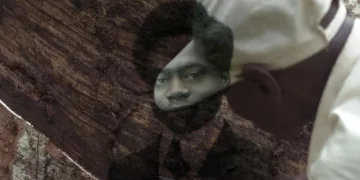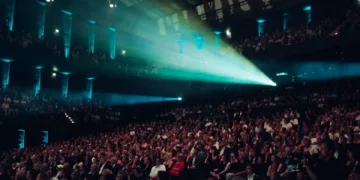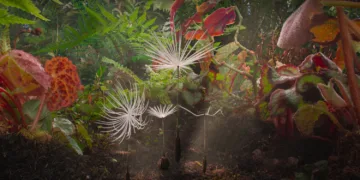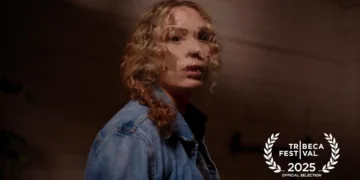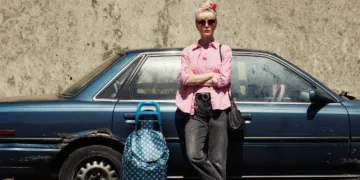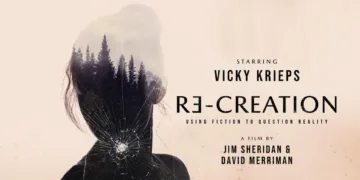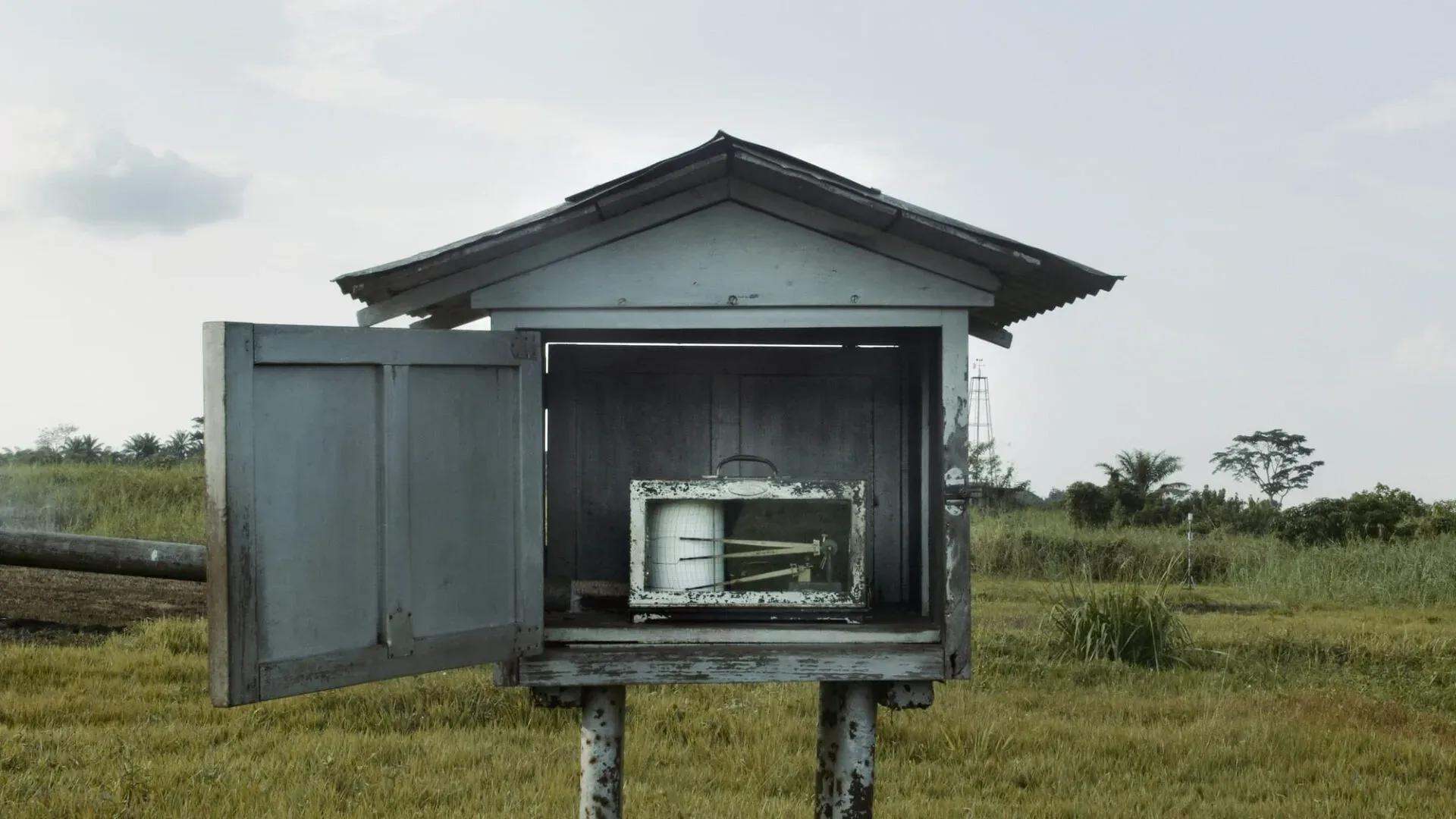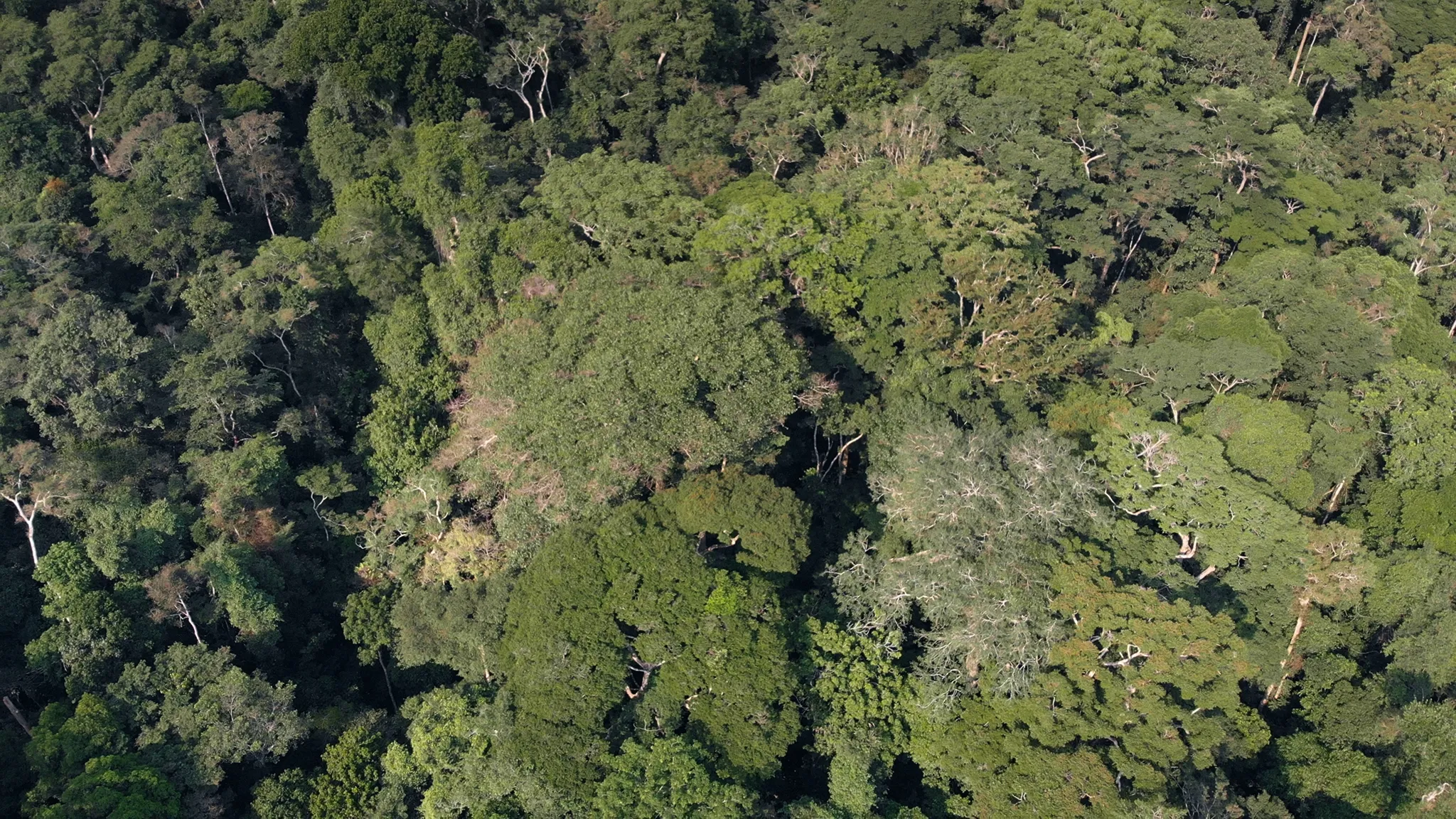Photographer Sammy Baloji’s The Tree of Authenticity is a distinct and contemplative visual essay. The film’s preoccupation is the Congo basin, a landscape where the deep wounds of Belgian colonial rule are inseparable from the soil and flora. This is a work of patient observation.
Its aesthetic is built from beautifully composed, often static shots of the present day, where lush, reclaiming forests are tangled with the skeletal remains of colonial buildings and factories. The film sets a meditative tone, listening to the land and the historical voices tied to it. It excavates a history that is both human and ecological, demanding a viewer’s full attention for an experience that is far from a conventional documentary.
A Dialogue Across Time
The film’s primary narrative method is to structure itself around the journals of two men from the colonial era, creating a dialectic of lived experience. The first voice belongs to Paul Panda Farnana, an early 20th-century Congolese agronomist. His writings, heard in voiceover, capture the profound conflict of his position.
Educated in Belgium and possessing a scientific mind, he also harbors a growing, sharp-eyed anger at the systemic exploitation he witnesses. His journal entries oscillate between meteorological data and powerful condemnations of the colonial project, illustrating the deep fracture between his European training and his emerging anti-colonial convictions.
In direct contrast is Abiron Beirnaert, a Belgian agricultural engineer whose texts reflect a completely different reality. His voice represents the colonial administration: detached, sometimes bored, and seeing the “taming” of the jungle as a righteous, civilizing mission. He speaks of resource management and crop yields with a technocratic confidence that reveals an imperial mindset, one that reduces both land and people to instruments for profit.
Baloji masterfully lays these audio accounts over his modern footage. A shot of rusted machinery being swallowed by thick green vines is not just a beautiful image; it is a visual metaphor for the decay of imperial ambition and the quiet, persistent power of nature to reclaim what was taken. This technique dissolves the barrier of time, making ideological conflicts feel immediate and showing how the specters of past practices haunt the contemporary landscape.
The Forest as Protagonist
The film’s most significant creative leap is its shift from human accounts to the perspective of the natural world, giving voice to the titular ancient tree. This move aligns with a broader turn in international art cinema and anthropology, where non-human perspectives are increasingly used to challenge a purely human-centered worldview. The execution is masterful.
It is not a simple narration. The forest communicates through an immersive and meticulously crafted soundscape. The air becomes thick with amplified insect hums, the percussive sound of rain on broad leaves, the viscous drip of latex from a rubber tree, and the deep, low rumbles that grant the tree its own form of speech.
This sonic world-building makes the viewer feel like an observer in an autonomous sphere that is indifferent to human concerns. In the third act, on-screen text articulates the tree’s consciousness as a silent witness. The message is one of profound refusal. The tree rejects being instrumentalized by any human power, whether as a symbol for colonial plunder or post-colonial nation-building.
It pointedly laments its newest role as a “worker” in the modern climate economy. This critique is sharp: even in our attempts to solve climate change, we continue to treat nature as a utility, a service provider for human failings rather than a sovereign entity. By giving the forest this agency, the film forces a deep reconsideration of history and ecology.
The Archive of Exploitation
The Tree of Authenticity presents a meditation on the very definition of extraction. Baloji’s work argues that the colonial project took not just physical resources but also scientific data and historical narratives, treating knowledge itself as a raw material to be mined.
The film’s critique of institutional science is quiet but devastating. Lingering shots of dusty lab equipment, taxonomic charts, and archival records are more than atmospheric. They serve as a rebuke to the myth of objective inquiry, revealing how disciplines like agronomy and botany were tools of a destructive system. The act of naming and categorizing a plant becomes a parallel to the racist classification of people—both are exercises in control.
The film’s demanding, slow pace positions it within the tradition of the cinematic essay, a form that prioritizes ideas over narrative momentum. This slowness is a political choice. It forces the audience to abandon the typical rapid consumption of images and instead sit with uncomfortable truths and complex histories. It is an experience that unfolds gradually.
This is a powerful corrective to simplified historical accounts, using a unique cinematic language to show how the past physically and sonically inhabits a place. It powerfully suggests a need for new ways of relating to the environment, ones based not on speaking and dominating, but on listening and co-existence.
The Tree of Authenticity premiered at Visions du Réel in April 2025, received a Special Jury Award at Rotterdam (IFFR) 2025, and continued on the festival circuit with screenings at BlackStar and Jeu de Paume.
Full Credits
Director: Sammy Baloji
Writers: Sammy Baloji, Ellen Meiresonne, Thomas Hendricks, David Van Reybrouck
Producers and Executive Producers: Rosa Spaliviero
Cast / Featured: Edson Anibal, Diederick Peeters
Director of Photography (Cinematographer): Franck Moka
Editors: Luca Mattei
Composer / Sound: Laszlo Umbreit, Chris Watson
The Review
The Tree of Authenticity
The Tree of Authenticity is a deeply intelligent and artistically audacious film that demands patience but richly rewards it. A haunting and essential work, it uses a unique audiovisual language to confront the lingering ghosts of colonial history and propose a radical new way of listening to the natural world. It is a challenging, unforgettable cinematic essay.
PROS
- Stunning cinematography that captures the haunted beauty of the landscape.
- Groundbreaking sound design that creates an immersive, non-human perspective.
- A profound and intellectually rigorous exploration of colonialism, science, and ecology.
- Masterful use of archival voices against present-day visuals.
CONS
- Its slow, meditative pace may be difficult for some viewers.
- The dense, academic approach requires significant viewer concentration.
- Lacks a conventional narrative structure, which could alienate certain audiences.
